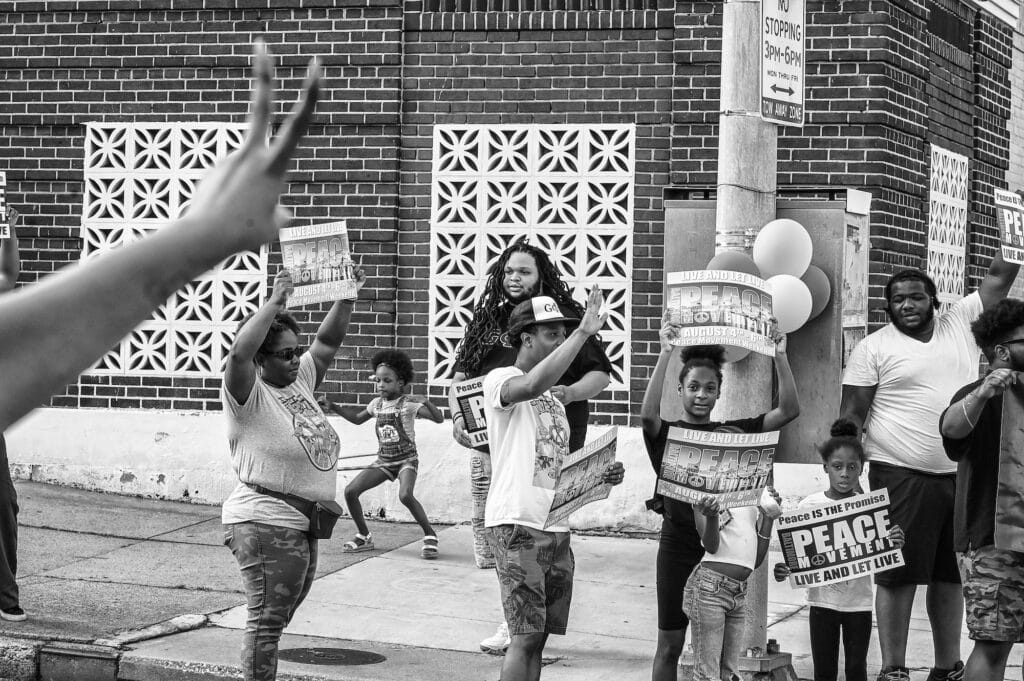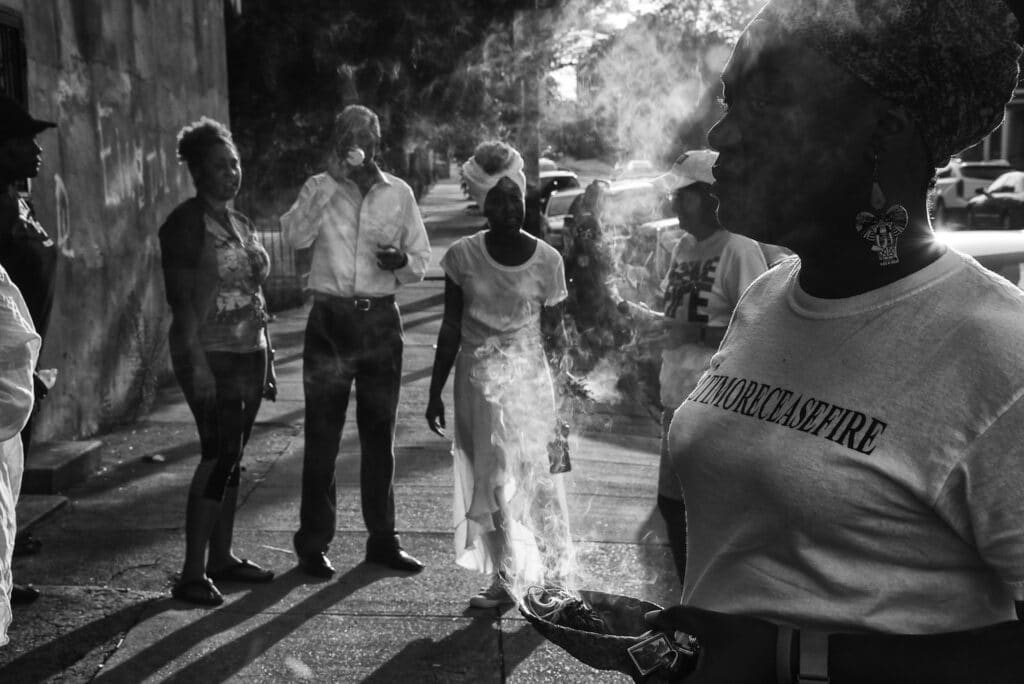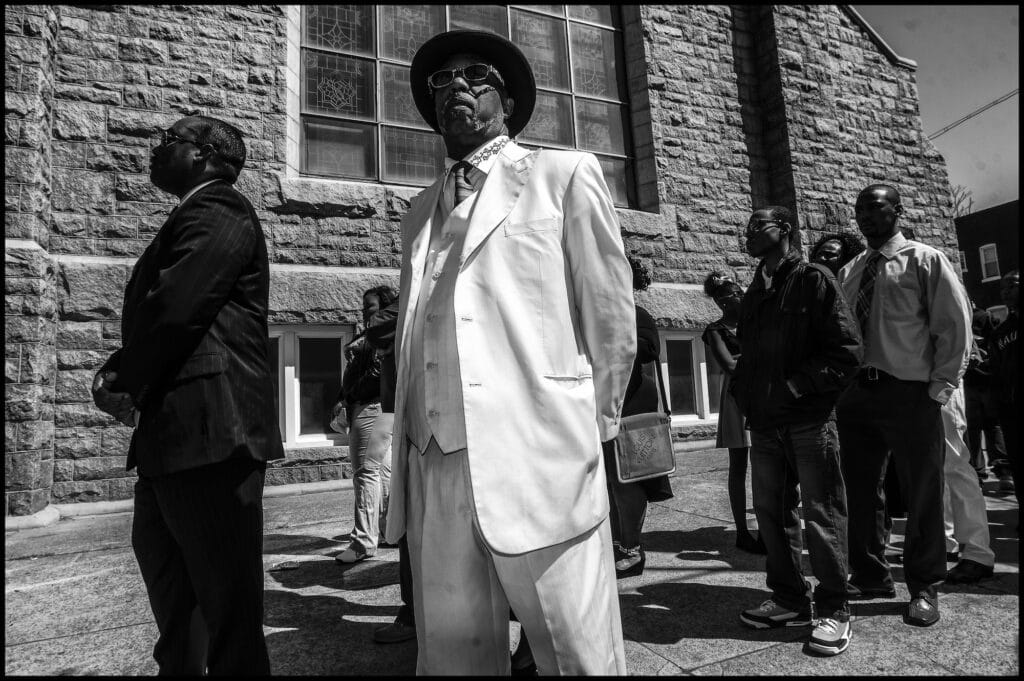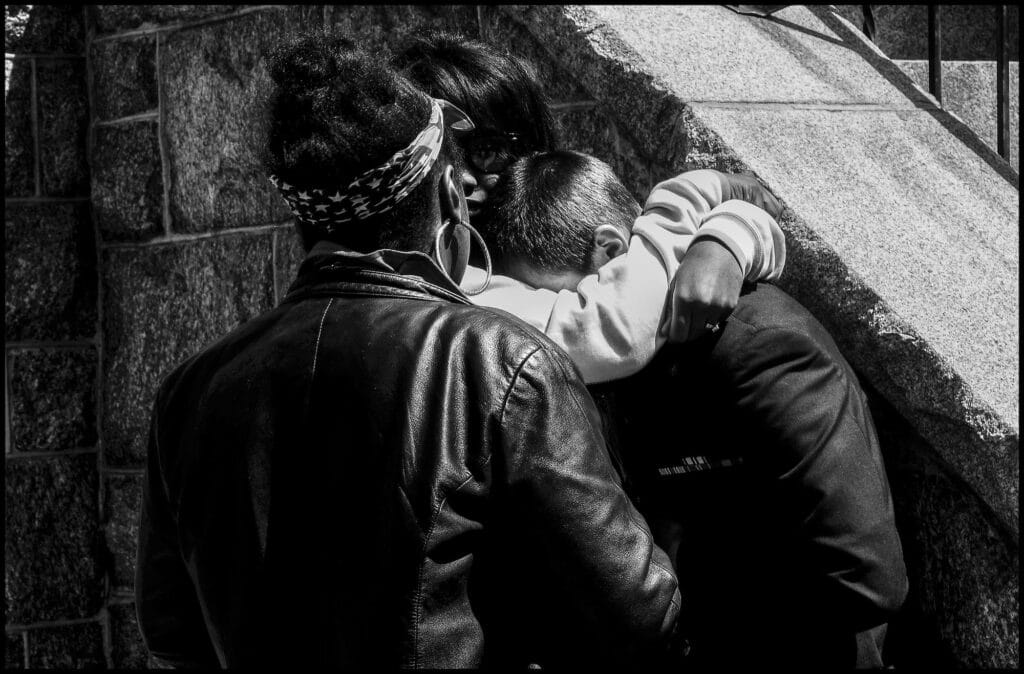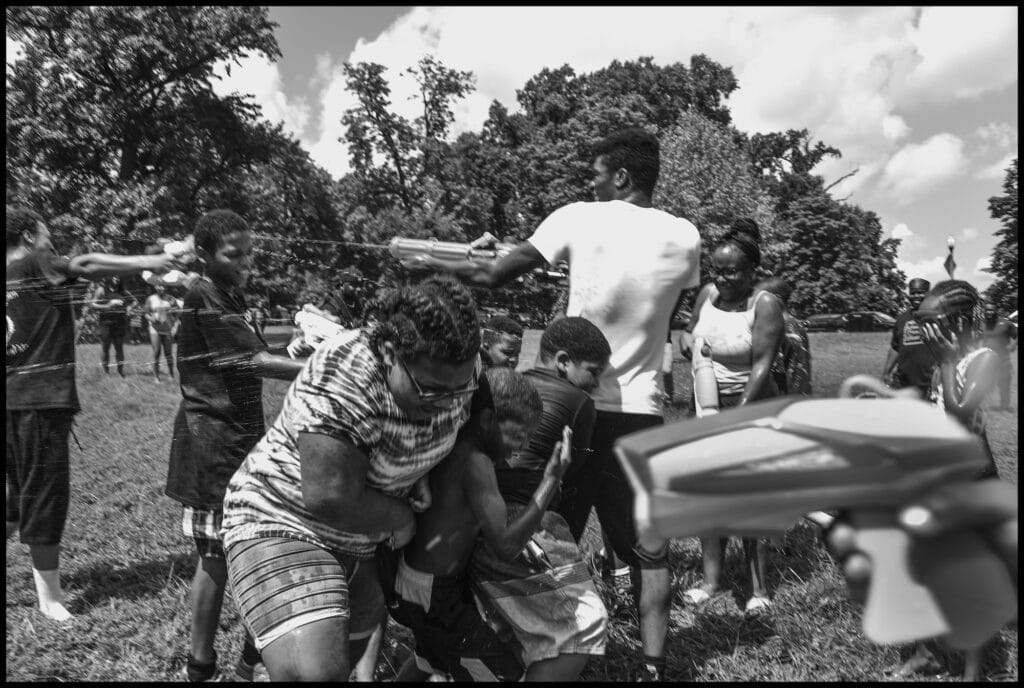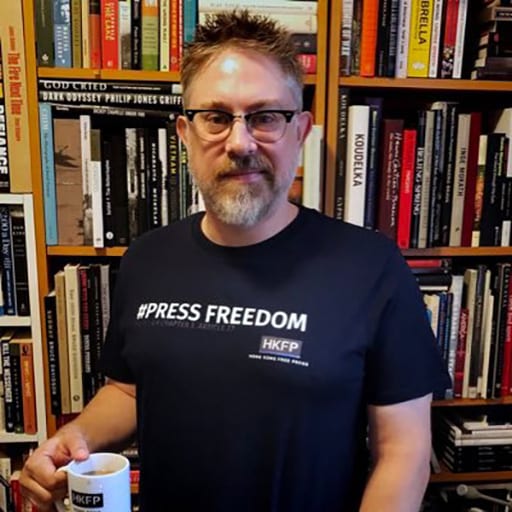In the summer of 2013, the City of Baltimore saw a spike in homicides, with 235 recorded. That was up from the 219 seen in 2012. At the time, the number “defied reginal and national trends.” In the wake of the increased killings, activists began taking to the streets to protect their neighborhoods, where they saw the police as ineffectual in fighting the gun violence.
“This has to be the worst area out of the whole Baltimore City because of the violence. And the police does nothing about it. They just ride past. You can call in a million time and nothing” said Sakinah DeGross in 2013, a Baltimore resident who lived in one such neighborhood.
Adding to the outrage, Tyrone West, a 44-year-old African American, was beaten by police after fleeing a traffic stop that same summer and died at the scene. This led his sister to take on the police department in her family’s name.
Photojournalist J.M. Giordano began documenting events following the spike in homicides. “I felt that not enough people in the city really understood or connected with what was going on. Victims of gun violence, to a majority of the city, were numbers or quick hits on the local news. I wanted to bring more awareness. I approached The Baltimore City Paper, now defunct, to run a series called “Summer of The Gun” that would be a mix of interviews with victims’ relatives, and snaps of what went on around crime scenes across the city.”
Giordano began photographing when he was in high school, and continued when he was in the Army. He now works as a journalist by trade. “I really started documentary work full time with this series. I’m heavily influenced by the work of Gilles Peress, Paolo Pellegrin, Roy DeCarava, Eugene Smith, Daido Moriyama, and Masahisa Fukase. Many of those names are pretty cliche, but each has a different effect on my work. The graininess of the Japanese photographers, the light of DeCarava and Smith, the breaking up of the frame by Peress and Pellegrin are essential to my work.”
Giordano followed several activist groups that formed to protest the violence and the inaction of the police. He was invited to marches and protests and began photographing the movement as it sprung up. He was even invited to funerals because some relatives felt that the media was not following up with the families of those lost to violence.
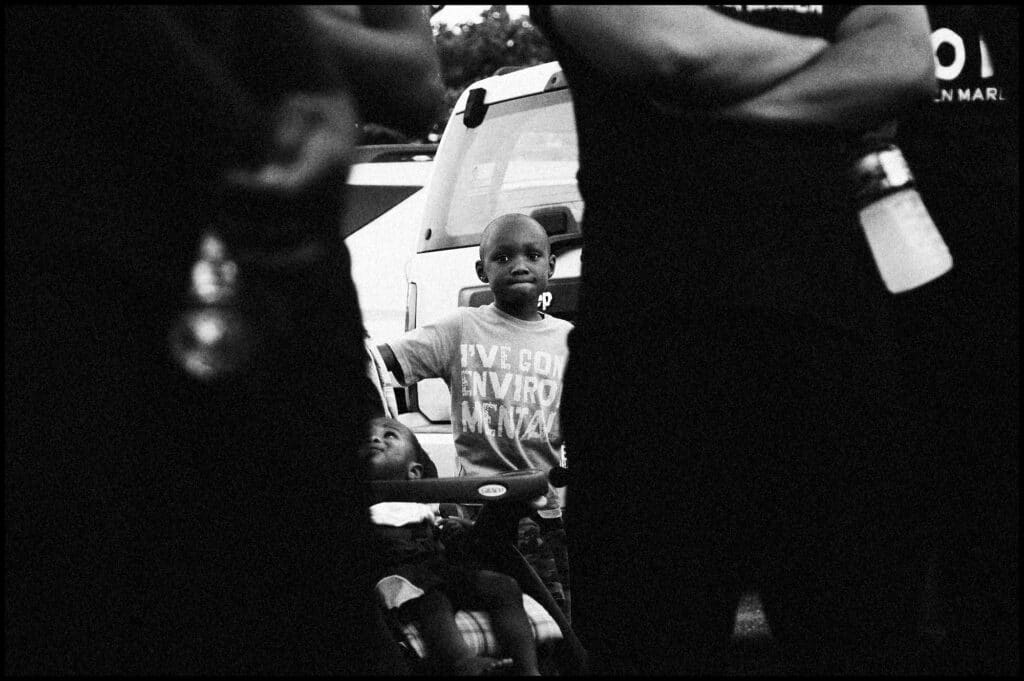
The groups included the Baltimore Peace Movement, originally known as Baltimore Ceasefire 365, who walked through the city during the 300 Man March and now organize Peace Promise Weekends at various times during the year. Fed up with the city’s gun violence taking their children, Moms Demand Action held rallies and marches. And Baltimore Safe Streets knocks on doors and uses “violence interrupters” to try and stem gun violence, which sometimes has led to the murders of some of their own. But according to Johns Hopkins researchers, their work has also led to a drop in gun violence in the neighborhoods where they are located.
“One of the photos features a young Brandon Scott, who’s a co-founder of the 300 Man March movement. He’s now the mayor of Baltimore.”
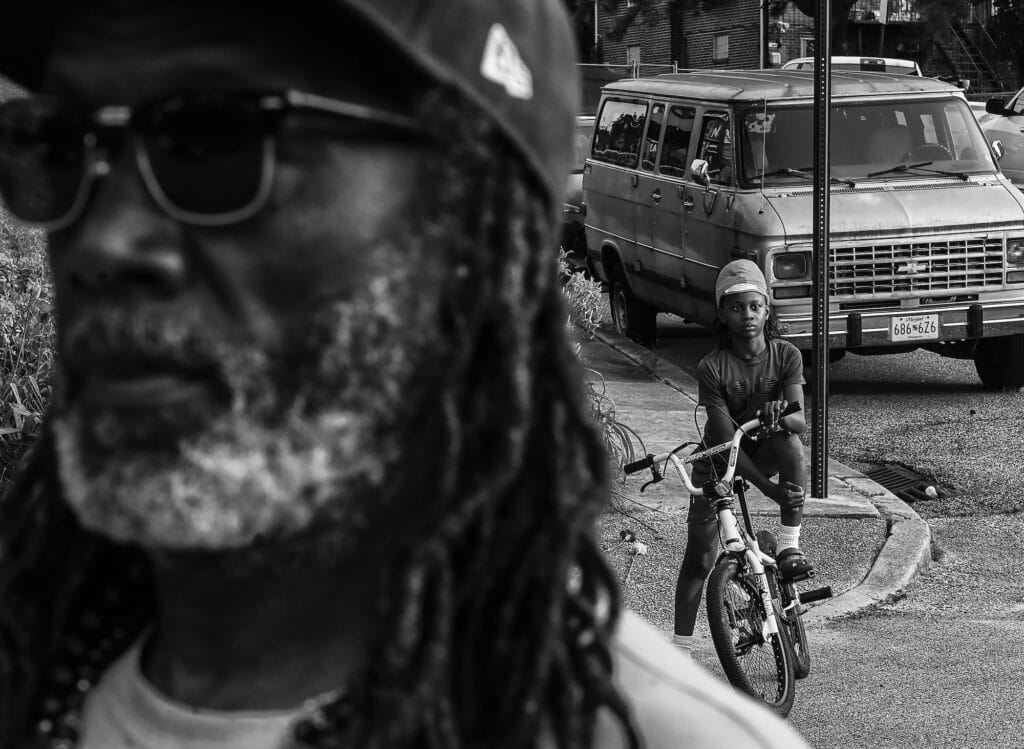
“I’ve kept with those groups for a decade. Last year, as I was going through my archives, I noticed faces in 2013 who were still working in activist groups today. My photos in the book, as well as essays from members of various movements, are a linear narrative between 2013-2023. One of the photos features a young Brandon Scott, who’s a co-founder of the 300 Man March movement. He’s now the mayor of Baltimore.”
After ten years working on the project, Giordano is still continuing his project, but now as assignment-based work. His hope is that a younger photographer will pick up the theme and continue with it. And Giordano hopes that maybe the work in the book will lead to changes in how people see gun violence, its victims, and those who are working to end the violence.
“A little more empathy for the victims of our cities’ gun violence. Maybe think a little before leaving a glib or insensitive comment on social media and to really look at the work our anti-gun violence activists do in these communities on a daily basis.”
13-23 can be purchased through Nighted Life Press on their website here.
Profits raised by sales of the book will go to Baltimore Peace Movement, an organization enabling community members to support one another, work together, and share resources with the goal of nurturing and expanding joy, love, and peace in Baltimore.

